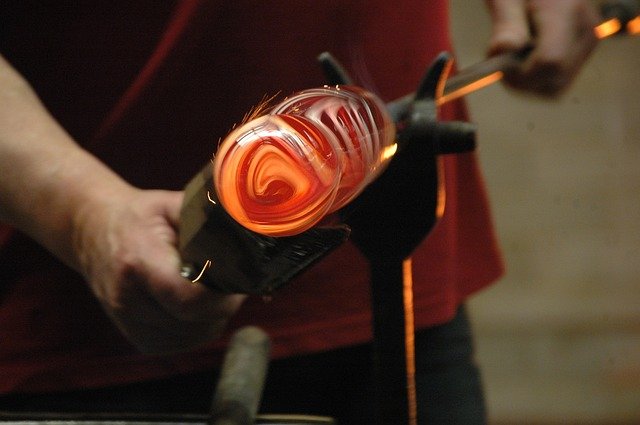Breaking glass of a window or glass is easy, but trying to do the same with solid glass can be difficult or downright impossible. And it’s a much stronger material than it should be technically. Especially if you look at its molecular composition. What’s it all about?
Using a computer model, a team of scientists tried to figure out how particles within this type of glass make it so resistant, even though it has a messy molecular structure. During their investigation, they realized that the source of their strength can be found in a small group of components.
It turns out that solid glass particles usually form the so-called force-bearing networks before the material cools completely, thus leaving its unstable and viscous state. The calculations showed that the skeleton of these particles within the viscous glass reaches the percolation threshold, that is, the point at which its network becomes dense enough to provide a greater force to the material. The researchers consider that this robustness is achieved due to a “jammed system”.
“At zero temperature, the jammed system will show long-range correlations under stress conditions due to its internal percolation network,” explained Chinese physicist Hua Tong, from Jiao Tong University in Shanghai.
Glass belongs to a group of amorphous solid substances that lack not only the long-range order – characterized by the mutual geometry of atoms and molecules repeating themselves over indefinitely long distances – but also the lattice pattern that can be found in crystals. In these circumstances, it is the small group of particles that helps the solid glass to withstand the pressure amid the chaos and molecular disorder within its structure.
However, to increase the strength of the glass these particles must be sufficiently filtered through the material. The new study explains how they leak during the glass transition. The researchers suggest that some of the particles must be connected to each other with at least two strong bonds, even if most of their components are messy.
The development of stronger and more durable glass can be useful in a large number of products, from kitchen utensils to smartphones. The study authors hope that their findings will lead to the development of new and practical innovations for this material.
“Our findings may pave the way for a better understanding of amorphous solids from a mechanical perspective,” concludes study co-author Hajime Tanaka from the University of Tokyo.
